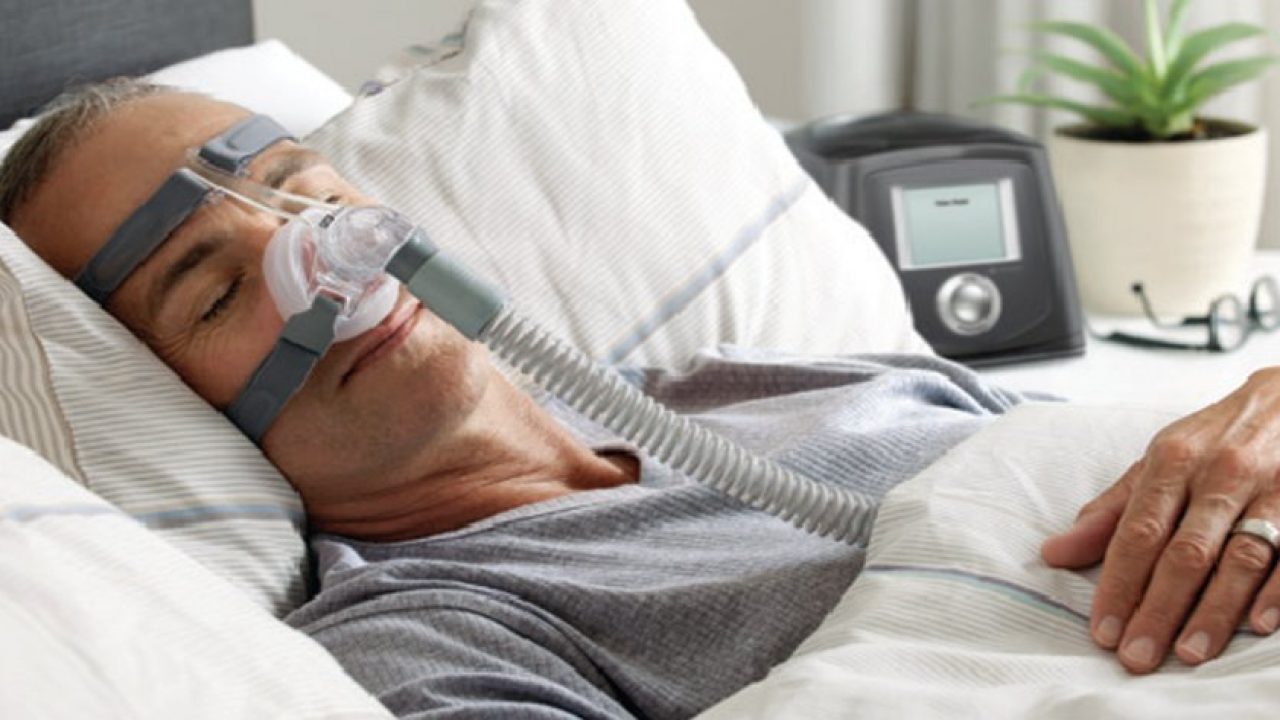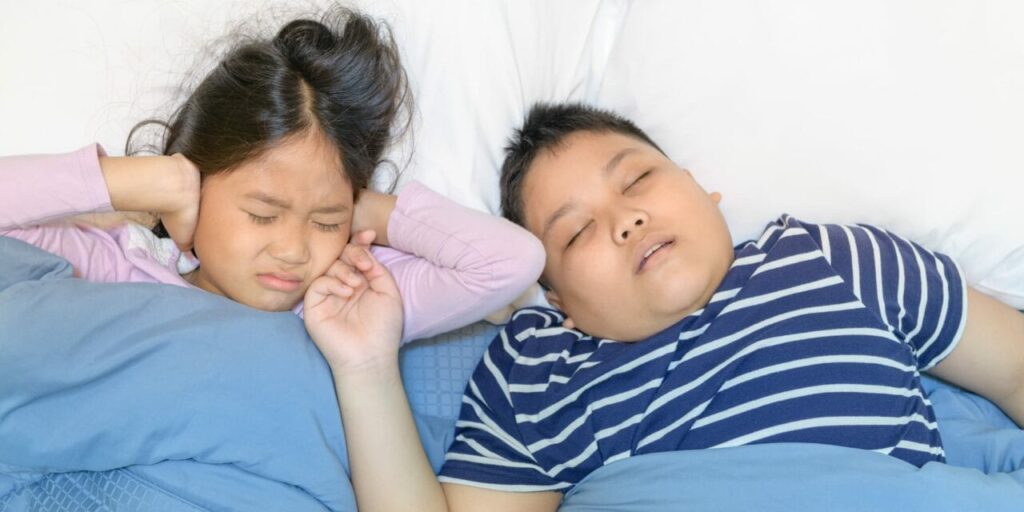
Do you know what obstructive sleep apnea is?
The muscles at the back of your throat relax, which causes this to happen. The tonsils, the side walls of the throat, the tongue, and the soft palate are all supported by these muscles. These muscles also help to maintain the uvula, a triangular piece of tissue that hangs from the soft palate.
Your airway narrows or possibly closes entirely when you take a breath in as the muscles in your airway loosen up. Because you aren’t getting enough air, your blood’s oxygen content may start to decline. When your brain notices that you can’t breathe, it briefly awakens you up so you can clear your airway and start breathing normally again. This epiphany often happens so quickly that you don’t remember experiencing it.
You could choke, snort, or gasp for breath that is what how does sleep apnea happen. You may experience this cycle anywhere from five to thirty or more times each hour during the whole night, making it difficult for you to drift off into the deeper, more restful phases of sleep.
Central snoring
When your brain is unable to communicate with your breathing muscles, you continually stop breathing while you sleep. This less common kind of sleep apnea occurs. This shows that for a little period of time, you do not make any attempt to breathe. You could discover that you have problems staying asleep, falling asleep in the first place, or staying asleep at all.

Factors that affect risk
The effects of sleep apnea may affect anybody, including young children. But there are other factors that increase your risk.
Some of the risk factors for this kind of sleep apnea include the following:
- Growing older: Central sleep apnea is more likely to affect those who are middle-aged or older.
- Being a man: Males are more likely than females to suffer from central sleep apnea.
- Heart conditions: Stroke risk is increased by congestive heart failure.
- Using narcotic painkillers: Using opioid medications, especially those with a prolonged duration of action like methadone, is linked to an increased risk of central sleep apnea.
- Stroke: If you have previously had a stroke, your risk of developing central sleep apnea or treatment-emergent central sleep apnea is enhanced.
Complications
The medical condition known as sleep apnea is risky.
It’s possible to feel exhausted throughout the day when difficulties occur.
It is challenging to achieve a normal, restful night’s sleep because of the frequent awakenings linked to sleep apnea. The chance of feeling severe daytime fatigue, tiredness, and irritation thus rises.
It’s probable that you won’t be able to concentrate and that you’ll start nodding off at work, in front of the TV, or even while driving. Accidents on the road and at work are more likely to occur in those with sleep apnea.
Additionally, you can have mood fluctuations, despair, or irritation. Children and teenagers who have sleep apnea may have behavioral problems or do poorly in school.
The most prevalent kind of sleep-related breathing problems, or sleep disorders with irregular breathing during sleep, is OSA. In addition to obstructive sleep apnea, there are three more sleep-related breathing diseases that are distinct from OSA in terms of their etiology and symptoms.
Central sleep apnea (CSA)
This disease causes recurrent nighttime breathing pauses in sufferers. In contrast to OSA, CSA is brought on by a deficiency in the brain impulses that regulate breathing. Some persons have sleep apnea episodes that resemble both CSA and OSA.
Disorders of sleep-related hypoventilation
When this condition occurs, a person’s breathing is insufficient to maintain the proper amounts of oxygen and carbon dioxide in the blood. While a person may have both OSA and a sleep-related hypoventilation disease, OSA patients often have a shorter duration of abnormal oxygen and carbon dioxide levels.
Sleep-related hypoxemia disorder
If a person has low blood oxygen levels that are not brought on by OSA or another sleep-related breathing issue, they may be diagnosed with this condition.
Symptoms of obstructive sleep apnea
It may be difficult for a person to notice OSA symptoms while they are sleeping, and it may take years for them to do so and seek medical attention. Excessive daytime fatigue, comments from loved ones, or symptoms in the morning are some of the early warning signs of obstructive sleep apnea.
- Excessive daytime drowsiness: The most frequent medical cause of excessive daytime sleepiness is OSA. People who have OSA may nod off when doing boring things like reading or watching TV, and they may need coffee to stave off chronic drowsiness.
- Snoring or apnea is observed: Obstructive sleep apnea symptoms are often initially noticed by a loved one, caregiver, or bed partner. They could hear a sleeper gasp, choke, snort, or cease breathing while they are asleep, or they might hear loud, bothersome snoring.
- Morning symptoms: Signs of underlying OSA include waking up with a headache, dry mouth, or the desire to pee. Most days, morning headaches might continue for hours.
Heart-related conditions or high blood pressure
A spike in blood pressure and stress on the cardiovascular system may come from the abrupt drops in blood oxygen levels that occur as a consequence of sleep apnea. You have a higher risk of getting high blood pressure if you have obstructive sleep apnea (hypertension).
Additionally, having obstructive sleep apnea increases your risk of a second heart attack, stroke, and abnormal heartbeats like atrial fibrillation. Multiple episodes of low blood oxygen levels, also known as hypoxia or hypoxemia, might increase your risk of sudden cardiac arrest and death if you already have heart issues.

Type 2 diabetes
Type 2 diabetes and insulin resistance are both diseases that are more prone to develop in those who have sleep apnea.
Metabolic syndrome symptoms.
This illness is linked to a higher risk of developing cardiovascular disease and may be recognized by symptoms including high blood pressure, abnormal cholesterol levels, excessive blood sugar, and an expanded waist circumference.
Complications brought on by medication usage or surgery
Additionally, when taking some medications or receiving general anesthesia, there is a chance of developing obstructive sleep apnea. When under anesthesia and lying on their backs during major surgery, people with sleep apnea are more prone to have breathing problems. They are more prone to have difficulties after the treatment as a result.
Before having surgery, discuss your sleep apnea with your surgeon and the therapy you’re getting for it.
Liver problems.
People who have sleep apnea are more likely to get abnormal liver function test findings and to experience scarring symptoms in their livers (nonalcoholic fatty liver disease).
Snoring partner.
Very loud snoring could make it difficult for others who are sleeping close to have a good night’s sleep. Due to the presence of their sleeping partner, it is fairly uncommon for one spouse to need to sleep in a separate room or even on a different floor of the house.
Obstructive snoring
One of the risk factors that may increase the probability of having this kind of sleep apnea is being overweight. Obese people have a noticeably higher risk of getting sleep apnea. People may have trouble breathing if there are fat deposits around their upper airway.
The neck’s circumference
People with bigger necks may have more constrained airways.
A blockage in the airway
You could have inherited your short neck from your parents. Children are more prone than adults to have enlarged tonsils and adenoids, which may obstruct the airway.
Being a man
Males are two to three times as likely than females to have sleep apnea. However, it seems that a woman’s risk of breast cancer rises after menopause and climbs more if she is overweight.
Age
Adults over 60 have a much higher chance of getting sleep apnea.
The family’s history
If your family has a history of sleep apnea, your risk of having it may be enhanced.
Use of sedatives, tranquilizers, or alcoholic beverages
These substances might make your obstructive sleep apnea worse because they relax the muscles in your throat.
Smoking
Compared to current smokers, those who have never smoked have a considerably decreased chance of acquiring obstructive sleep apnea. When a person smokes, it is possible for inflammation and fluid retention in the upper airway to worsen.
Nasal passage congestion
If you have problems breathing through your nose, whether because of an anatomical problem or allergies, you are more likely to develop obstructive sleep apnea.
Physical disorders in people
Numerous conditions have been linked to a higher risk of developing obstructive sleep apnea, including Parkinson’s disease, type 2 diabetes, high blood pressure, and congestive heart failure. The probability of developing polycystic ovary syndrome may be increased by hormonal imbalances, a history of stroke, chronic lung diseases like asthma, and others.
See also: Detective measures for sleep apnea
